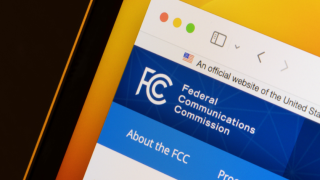Speaking to Stowell about the decision to build this new private system connecting the US and the UK, she shares that end of lifecycle for many other cables along this route has contributed to its development.
“Many of the cables presently in transatlantic water are aging and need to be upgraded with new technology and for improved physical reliability,” Stowell explains. “We need to be able to proactively manage the capacity availability, quality, latency, routing, technology and scalability of our network to provide constant, uninterruptible and high quality of network to Google services like Meet, Gmail and Google Cloud.”
Next the Grace Hopper cable according to Stowell forms an integral part of Google’s plan to strengthen its services offering between North America and Europe.
“The cable traffic will travel quickly and securely between the United States and Europe, giving European users access to Google’s online services as well as its compute and cloud resources with low latency,” she explains.
If that weren’t enough the new cable will “help bring diversity and resilience to Google’s network by providing an important additional route for traffic flowing between the US and Europe,” says Stowell.
The new systems is Google’s first private cable to the UK, and first private cable to Spain and Stowell says that the region is an important market for Google Cloud, as it is “constantly increasing our UK customer base which includes Lloyds Banking Group and the UK government”.
Though seemingly unaffected by the effects of the global pandemic, it has according to Stowell demonstrated the importance of having a reliable, resilient, high capacity network especially in the face of a new digital normal.
Sharing further details on the project, Stowell explains that the new system will use a combination of both data centre and cable landing station (CLS) connectivity, adding that in her view the CLS will always be necessary in some form of another.
“We will land the cable at a cable landing station and then backhaul capacity onward to various points of presence (PoPs) and data centres.
Interestingly she says that discussion of CLS vs data centre is in the fact the wrong one and we should be more concerned about whether or not the Submarine Line Terminal Equipment (SLTE) is co-located in the same facility as the Power Feeding Equipment (PFE).
“There are a number of factors to consider when judging where the SLTE is located, but generally cable landing stations remain important for subsea cable projects” she says.
At the time of the announcement, Google also confirmed that it would once again be working with cable manufacturer SubCom. To date the two have worked together on the Dunant and Curie cables systems to name a few, making them top choice this time round.
“We have worked with SubCom on other submarine cable systems and have found them to be very proactive, collaborative and solution oriented,” explains Stowell.
In one particular example, Google identified a need for a three-way fibre switching capability to enable it to dynamically switch fibres between the US, UK and Spain, an “any to any” capability.
“SubCom listened to us and rapidly adapted their most sophisticated branching unit to accommodate our needs,” continues Stowell. “This is a world first and reflects the great work and leadership that we expect to continue to see from SubCom.”
As conversation turned towards female representation in the subsea sector, Stowell shares that her experiences have been nothing short of positive partly due to the relatively small size and close-knit community within subsea.
“I've been fortunate to have been in the industry for around 25 years and to have met and worked with many of the key people in the industry. When you know people as individuals, barriers are much more easily overcome,” she says.
“I can happily report that I have almost always been treated with nothing other than respect and inclusiveness.”
She does however think there is much to be done on to attract more diversity in all its forms to this rather homogenous sector.
Expanding on way it is this way, she shares that between 2000 and 2010 there was a huge slow down in the submarine cable industry.
“During this time, companies were most concerned about downsizing and were not attracting new recruits into the industry. Therefore, the sector is still largely populated by many of the same pre-2000 people and hasn’t been refreshed by a younger and more diverse set of people.”
Acknowledging the importance of the situation she shares that Google is doing a lot of work in this space.
“Last year we partnered with Optical Society of America and SubOptic to launch a summer school for graduate students to introduce them into the submarine cable industry and help them understand the exciting career prospects they could pursue.”
“108 students from 31 countries attended the first summer school, including 10 African countries, and 26% of the students were female. We shall be continuing with the annual summer school and will be holding next year’s school in South Africa.”
Scheduled to become ready for service in 2022, the cable has nearly completed marine survey, the route engineering is almost done and “manufacturing will commence very shortly”.






